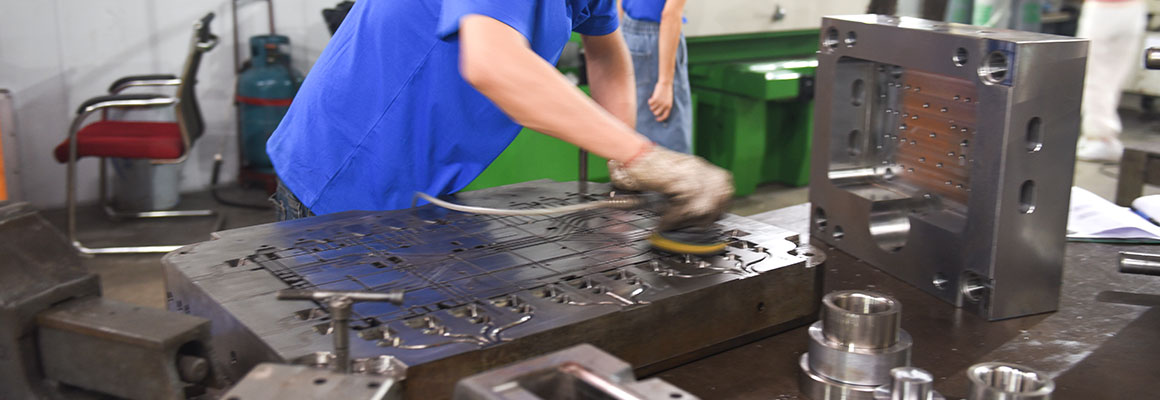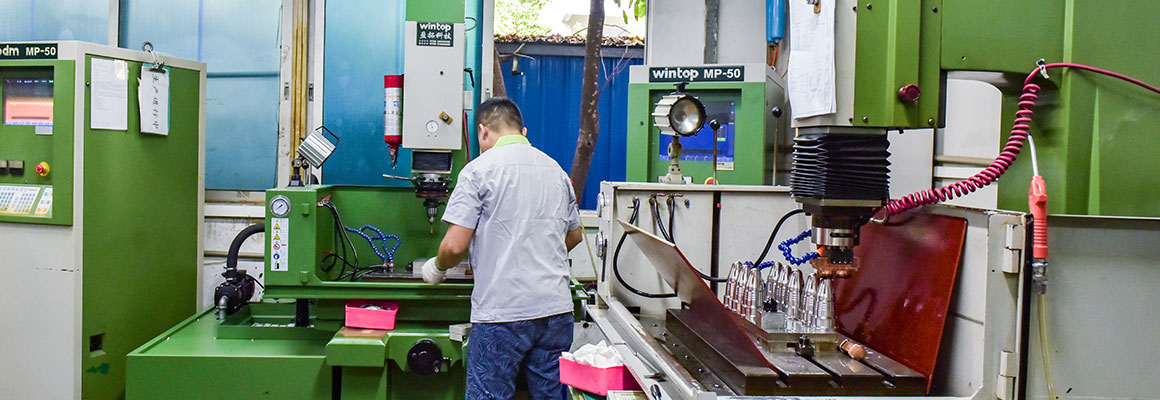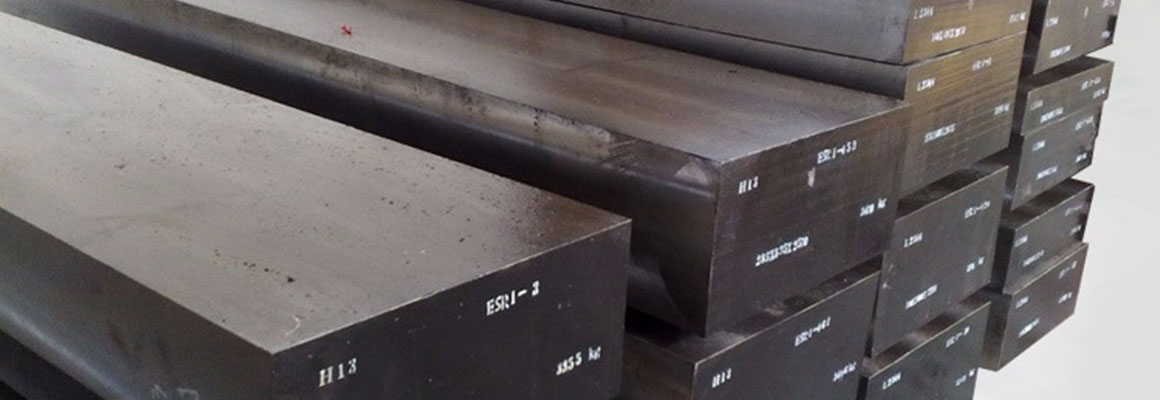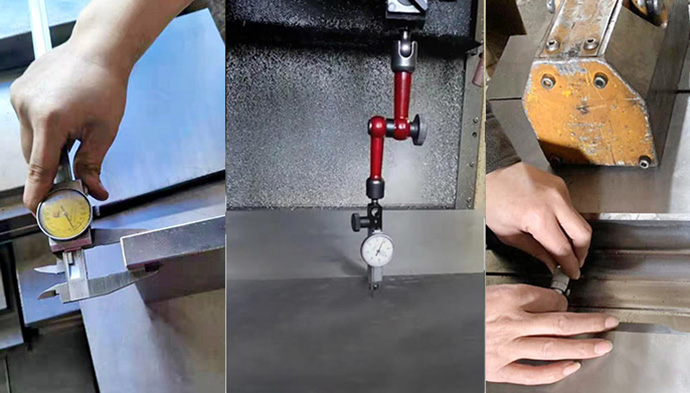Die casting molds play a vital role in modern manufacturing. Die casting molds are critical tools for producing high-quality parts and products. They occupy a significant market share and can be used to make various metal parts. , such as auto parts, engine parts, electronic parts, home appliance parts, etc. This article will take an in-depth look at how to make high-quality die cast molds to help readers better understand this critical manufacturing process.

A die-casting mold is a tool used to inject liquid metal or alloy into a mold cavity under high pressure to solidify and form the desired part or product. The die-casting mold consists of an upper mold and a lower mold. After the metal is injected, the mold cavity is filled with high pressure. After cooling, the mold is opened to take out the finished product.
The working principle of the die casting mold is mainly divided into the following steps:
Mold closing: the upper and lower molds are closed to form a closed mold cavity.
Injection metal: A nozzle injects Liquid or alloy into the mold cavity.
Filling the mold cavity: The metal fills the entire mold cavity under high pressure.
Cooling and solidification: The metal gradually solidifies into shape.
Open the mold and remove the parts: After the metal is completely solidified, the mold is opened, and the finished parts are removed.
Through this series of steps, die-casting molds can efficiently manufacture complex-shaped metal parts. They are widely used in automobile manufacturing, aerospace, electronic equipment, electrical appliances, instrumentation, consumer electronics, and other industries.
Manufacturing of products with complex shapes: Die-casting molds can manufacture metal parts and products with complex shapes.
Efficient production: Through die-casting molds, large quantities of finished products can be produced in a shorter time and at a faster speed.
Improve product quality: Die-casting molds can ensure product consistency and precision and produce products with accurate dimensions and reliable quality.
Cost saving: Die-casting molds can save raw materials, workforce, and production cycles and reduce product production costs.
Before designing a die-casting mold, you must first obtain the 3D drawings or physical samples of the product provided by the customer and then design and manufacture the mold. The following are the brief steps for die-casting mold manufacturing:

Confirm demand: Understand customer requirements and specifications for products.
Analysis and design: Carry out mold design based on physical samples or 3D drawings and consider the production situation of several products in one mold.
Technical evaluation: Evaluate the design plan to ensure the mold structure is reasonable and meets production needs.
Numerical simulation: Analyze the mold design plan through numerical simulation to verify its feasibility.
Customer confirmation: Confirm the design plan with the customer, modify and optimize it until both parties reach an agreement.
Mold steel material selection: Choose a suitable mold steel material and consider service life and production efficiency.
Mold design: Develop detailed mold design drawings and consider the design of multiple cavities in one mold and the feed port design.
Manufacturing and processing: According to the mold design drawings, the mold parts are processed by turning, milling, boring, grinding, and other processing techniques to produce upper mold, lower mold, slider, and other mold parts.
Assembly and debugging: Assemble the mold parts, conduct opening and closing, de-molding testing, and debugging.
Product trial production: Use molds to conduct product trial production and check product quality and molding conditions.
Inspection and acceptance: Carry out comprehensive inspection and approval of molds to ensure quality standards.
Such a process ensures the smooth progress of mold design and production.
When selecting steel for use in making die casting molds, some of the following factors are considered:

Heat resistance: The die-casting process needs to withstand high temperatures and pressure, so steel with good heat resistance needs to be selected, such as H13 and H11 steel.
H13 steel has good wear and thermal shock resistance and is suitable for long-term work at high temperatures.
H11 steel has high thermal strength and good thermal shock stability, and it is suitable for manufacturing large molds or high-pressure molds.
Wear resistance: Molds will frequently come into contact with liquid metal during production, so steel materials that can withstand the impact and friction of high-speed liquid metal are required, such as 718 steel and NAK80 steel.
718 steel: high hardness and good wear performance, suitable for manufacturing die-casting molds that require high precision.
NAK80 steel has excellent wear resistance, heat resistance, and shrinkage resistance, and it is suitable for manufacturing high-gloss die-casting molds.
Dimensional stability: The mold needs to maintain stable dimensions under high temperatures and pressure, so it is very important to choose steel with good dimensional stability.
Lifespan and cost: Considering the mold's service life and manufacturing cost, choosing the appropriate steel is also an essential factor.
Each of these steels has certain characteristics, and their selection depends on specific product requirements, production environment, and cost considerations. Therefore, the above factors must be considered comprehensively when selecting steel to ensure that the mold can meet production needs and have a long service life.
In die-casting production, mold quality control and testing are crucial links. Through strict control and testing to ensure that mold manufacturing meets standards, reliable product quality can be produced. This article will introduce standard control methods and detection methods to help you better understand the quality management process in mold manufacturing.

Design review: Conduct professional review during the mold design stage to ensure that the design plan meets the requirements and has no loopholes.
Process control: Use high-precision and high-reliability processing equipment for mold processing to ensure the quality and accuracy of each process.
Material testing: Conduct strict testing on mold materials to ensure that the selected steel meets the requirements and avoids quality defects caused by material quality problems.
Heat treatment control: Strictly control the heat treatment parameters of the mold to ensure that the hardness and wear resistance of the mold meet the requirements.
Assembly and debugging: Carry out strict assembly and debugging of the mold to check the mold's opening and closing accuracy and molding condition.
Product trial production: Use the mold to conduct product trial production, check whether the product quality and appearance meet the requirements, and verify the production performance of the mold.
Regular maintenance: Establish a regular maintenance system for the mold to ensure long-term stable use and extend its life.
The above methods help ensure the quality stability and production efficiency of die-casting molds and effectively control quality problems that may arise during manufacturing.
Dimensional inspection: Accurately measure the size of the mold through three-dimensional coordinate measuring machines, projectors, calipers, and other tools to ensure that the mold size meets the design requirements.
Surface quality inspection: Use a surface roughness tester, microscope, and other equipment to detect the smoothness and flatness of the mold surface.
Material composition detection: Analyze the composition of mold materials through spectrometers, metallographic microscopes, and other equipment to ensure the use of steel that meets the requirements.
Hardness testing: Use Rockwell hardness tester, Brinell hardness tester, and other equipment to test the hardness of the surface and interior of the mold to determine whether the hardness of the material meets the requirements.
Heat treatment quality inspection: Use metallographic microscopes, microhardness testers, and other equipment to inspect the mold's heat treatment structure and hardness to ensure good heat treatment effect.
Functional testing: Perform assembly, opening and closing, molding, and other operational tests on the mold to verify the functional performance and stability.
The above quality inspection methods play a vital role in the die-casting mold manufacturing process to ensure that the quality of the mold meets the standards and produces high-quality die-casting products.
In the future, the trend of die casting will develop in the direction of intelligence, automation, and greening. Among them, digitalization and intelligence will become an important development direction of the die-casting industry. By introducing technologies such as artificial intelligence and the Internet of Things, intelligent management and optimization of the production process will be achieved. At the same time, with the continuous improvement of environmental awareness, green production will also be one of the key development directions of the die-casting industry in the future.
Tesla used a 6,000-ton die-casting machine and integrated die-casting technology on the Model Y rear floor for the first time. This reduced the number of parts in the Model Y rear floor by 79 and the number of welding points from 700-800 to 50. , the production time for the same parts has been reduced from at least two hours to 80-90 seconds. This innovation improves production efficiency and reduces production costs while bringing more reliable and durable products to the automotive manufacturing industry. Tesla's successful case of using integrated die-casting technology also shows the potential and prospects of this technology in the future die-casting sector. It brings a more efficient and accurate production experience to automobile manufacturing and other industries.
Therefore, integrated die-casting technology has excellent development potential and market prospects, whether in terms of environmental protection, efficiency, or cost. In the future, we expect this technology to be applied and developed in more industries.
Traditional die-casting is mainly used to manufacture single parts. In contrast, integrated die-casting aims to highly integrate multiple independent and dispersed parts to manufacture large castings through one-time die-casting. Therefore, the competition between integrated and traditional die-casting will also intensify. In this case, enterprises must continuously improve their technology research and development capabilities and market competitiveness to cope with increasingly fierce market competition.
Guangdong Shine-Choose Smart Manufacturing Co., Ltd! has been in the industry for 16 years and specializes in precision magnesium alloy die-casting, aluminum alloy die-casting, zinc alloy die-casting, and die-casting mold design and manufacturing. Just send us your needs, and we will assign professional die-casting engineers to provide you with professional die-casting mold manufacturing solutions.
This article comprehensively introduces how to make high-quality die-casting molds, including basic concepts, working principles, and functions, as well as crucial contents such as manufacturing steps and material selection. Readers will learn the basics of die-casting molds and understand their wide applications in various industries. In addition, you can also learn how to choose suitable materials to make die-casting molds to improve production efficiency and product quality, providing helpful reference and guidance for your work or research.
Copyright © 2023 :Guangdong Shine-Choose Smart Manufacturing Co., Ltd